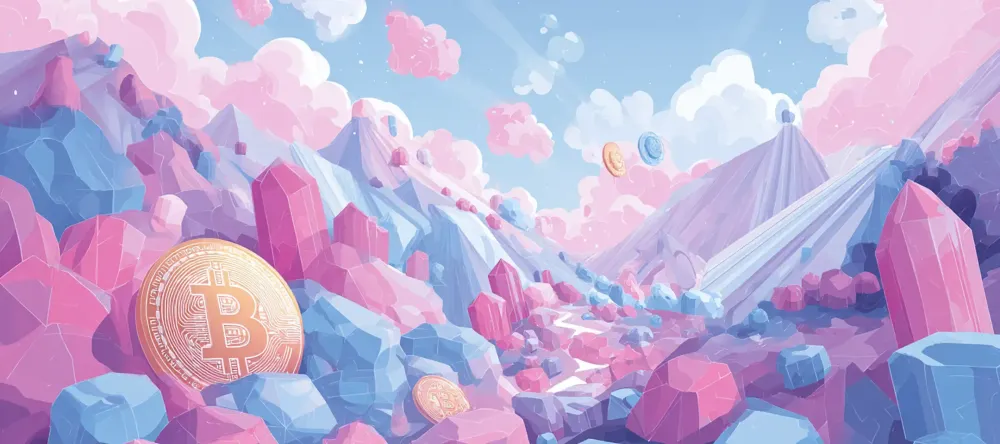When people hear that 93% of all Bitcoin is already mined, it may sound like the end of the story, but in reality it is only the beginning of a new phase. The shrinking supply reshapes how markets think about value, scarcity, and utility. It also forces innovation in services that help Bitcoin move, from exchanges to a Bitcoin payment gateway that links digital scarcity with real-world use. This turning point matters more than headlines suggest.
The shrinking supply and why it matters
When almost all of Bitcoin’s supply is already mined, the conversation shifts from discovery to preservation. Scarcity, long seen as Bitcoin’s defining trait, becomes real when only 7% of coins remain to be mined. Markets respond differently to scarcity than they do to abundance, and here we witness a psychology that resembles gold but with sharper edges. Investors, traders, and miners now speak about long-term scarcity premiums, a concept that gains momentum each time the percentage ticks higher. The narrative is not just about limited numbers, it is about how society interprets those numbers.
Scarcity also changes the mechanics of use. With fewer new coins entering circulation, the need for smooth and efficient transfers becomes stronger. Businesses that once saw Bitcoin as speculation are beginning to view it as a tool for daily operations. Payment infrastructure grows alongside this shift, and the development of every Bitcoin payment gateway shows how the market is adapting to scarcity. Adoption is never automatic, but the more tangible the finite nature of Bitcoin becomes, the greater the incentive to put it to use rather than simply store it.

The historical record shows that halving events and diminishing mining rewards push fees upward and alter incentives. Yet this does not halt activity, it only reshapes the economics of participation. The next stage in Bitcoin’s journey will be defined by the players who can move value effectively under scarcity. Service providers - from exchanges to a Bitcoin payment gateway - are already adjusting to these new conditions. Each adjustment reinforces one point: scarcity is not a limitation, it is the foundation of Bitcoin’s evolving role in global finance and commerce, a foundation that grows stronger as we edge closer to the 21 million cap.
The role of miners in a nearly mined world
If you talk to miners today, you can almost sense the nervous energy. The days when block rewards carried entire operations are slipping away, and everyone in the industry knows it. With 93% of the supply already dug up, the safety net is shrinking fast. The next halvings are not distant events on the horizon; they are milestones that miners must plan for with near surgical precision. What once looked like a simple equation - add more machines, find cheaper power, pocket the spread - now feels like walking a tightrope. Efficiency has become the mantra, but even efficiency has limits.
Transaction fees are gradually taking center stage, and that changes the entire rhythm of the network. Fees are no longer a side note; they dictate how quickly a transaction gets confirmed and how much people are willing to pay to move their coins. I’ve seen traders complain about fee spikes after halving events, and the frustration is real. Yet, in an odd way, it shows maturity. The system is evolving, and part of that evolution involves services stepping in to smooth the edges.
A Bitcoin payment gateway is no longer a luxury for merchants - it’s an essential channel that keeps coins flowing without friction when block space gets tight.
Miners, in turn, are not operating in isolation. They are tied to a larger economic web, one that includes exchanges, processors, and businesses that depend on predictable settlement. The irony is that as miners lose subsidies, they may find stability through collaboration with this wider ecosystem. A Bitcoin payment gateway that enables seamless settlements can, indirectly, support miners by maintaining liquidity and reinforcing demand for block space. The future of mining is not about brute force anymore. It’s about integration, sustainability, and recognizing that the health of the network is shared by everyone who relies on it.
Shifting economics of Bitcoin transactions
As block rewards shrink, the fee market becomes the stage where the real drama plays out. I remember when transaction fees were almost negligible, a few cents at most, and nobody thought twice about them. Now, after successive halvings and with 93% of coins already mined, those fees are no longer pocket change. They are a structural part of Bitcoin’s economy. Users who once assumed transactions would always be cheap are facing a new reality: block space is scarce, and scarce things carry a price tag. This is not a flaw, it is a feature of a maturing network.
The pressure on fees forces both individuals and businesses to reconsider how they move value. A casual user might accept waiting for hours when congestion is high, but companies cannot afford that uncertainty. This is where infrastructure takes on new weight. A Bitcoin payment gateway is not just about accepting coins at the checkout; it is about navigating a fee-driven ecosystem with efficiency. Gateways bundle transactions, manage confirmations, and create pathways that smooth the volatility of network costs. I’ve spoken with merchants who once abandoned Bitcoin because of unpredictable fees, only to return when reliable services made the process seamless again.
Looking ahead, this economic shift has wider implications. Miners benefit when fees rise, but only if the ecosystem remains active and healthy. If costs spiral too high, usage could stagnate, undermining the very revenue miners depend on. The balance is delicate, and it is maintained by the tools that keep transactions flowing. Another Bitcoin payment gateway - or, more accurately, the growing web of them - acts as a stabilizer, ensuring that Bitcoin does not turn into a hoarded asset that rarely moves. Instead, it stays in circulation, even under conditions of scarcity and rising costs. In that sense, infrastructure and economics are two sides of the same coin, each incomplete without the other.
Payment infrastructure adapting to the Bitcoin era
It’s easy to forget how improvised Bitcoin once felt. Paying for something as small as a coffee with crypto was less about utility and more about theater - a way to show the world that digital money could actually move. A decade later the tone has shifted. Merchants are not impressed by stunts anymore; they care about confirmation times, cost predictability, and whether their customers feel at ease when paying. In that space, a Bitcoin payment gateway plays a decisive role, turning raw code into a usable payment flow that resembles the familiarity of card networks.
What has really changed is the sophistication of the services behind the scenes. Sheepy.com, for example, has built tools that let businesses handle Bitcoin side by side with stablecoins like USDC and USDT. The effect of that is subtle but powerful. A shop owner doesn’t have to overhaul their systems, they simply integrate a crypto payment gateway and suddenly digital assets slide into the same checkout process as traditional money. I’ve seen skeptical businesses reverse their position once they realized how seamless settlements can be when handled through a Bitcoin payment gateway. In practice, infrastructure is not decorative - it is the oxygen that keeps the ecosystem alive.

And where does this path lead? Toward a blurrier line between the old world of banks and the new world of blockchain. The two collide, argue, overlap, and occasionally cooperate. Regulations will tighten, and experiments will continue, but users will keep demanding smoother ways to pay. In that messy negotiation, a Bitcoin payment gateway becomes more than a technical tool. It is a connector, a stabilizer, and in some respects a translator between two languages of money. That is why, even as Bitcoin mining nears its end, the rails that carry transactions will remain central to its survival and growth.
What the future holds after full Bitcoin mining
At some point in the next century, the final fraction of a Bitcoin will be mined, and the reward system that has fueled the network since its birth will effectively vanish. That milestone is not an abstract curiosity - it is a shift that forces us to ask what sustains the system when there are no new coins entering circulation. The answer is both simple and complex. Fees will dominate, incentives will evolve, and the community will lean more heavily on robust infrastructure. A Bitcoin payment gateway becomes more than a tool for retail transactions; it morphs into a critical artery that keeps liquidity moving through the network long after mining ends.
“If no more coins are mined, won’t Bitcoin just stop”? The honest response is no, it won’t. What happens instead is a rebalancing of forces. Miners will survive on transaction fees, users will adapt to new pricing realities, and services will grow to ease those transitions.
A Bitcoin payment gateway, by bundling activity and reducing friction, helps ensure that Bitcoin does not turn into a museum relic but continues to pulse through shops, apps, and cross-border settlements.
This isn’t speculation; we can already see the outline in the fee markets that form after each halving.
The long-term vision stretches further than the mechanics of block space. If Bitcoin holds its cultural and financial relevance - and I believe it will - it will be because the rails supporting it have kept pace with change. That means exchanges refining liquidity, wallets becoming more intuitive, and yes, every Bitcoin payment gateway weaving Bitcoin into the everyday fabric of finance. The end of mining is not the end of the story; it is a new chapter. One where scarcity, utility, and infrastructure converge to test whether Bitcoin can stand not just as an investment but as a lasting monetary system.
When scarcity becomes the signal
The fact that 93% of Bitcoin is already mined is not a warning siren, it is a marker of maturity. Scarcity shifts perception, reshapes incentives, and drives innovation across the network. Miners adapt, fees take on new weight, and infrastructure grows stronger in response. A Bitcoin payment gateway is not just a convenience in this new phase but a necessity, ensuring that Bitcoin remains a living, moving currency rather than a static store of value. The journey doesn’t end - it deepens.
Sheepy helps leading iGaming, FX, and E-commerce brands grow their crypto payments - trusted since 2022.